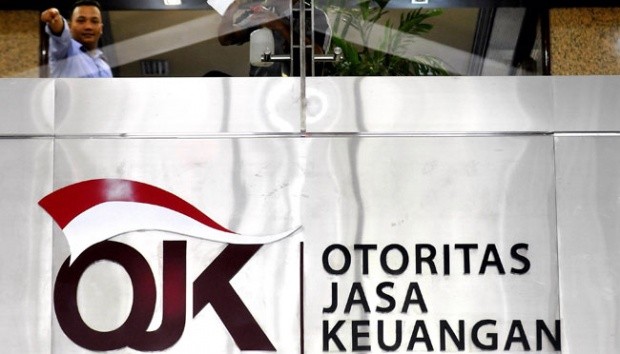Popular Reads
Top Results
Can't find what you're looking for?
View all search resultsPopular Reads
Top Results
Can't find what you're looking for?
View all search resultsIn the bond markets, green is the new black
Thus, green bonds are seen by analysts as a catalyst for economic resilience as they are able to captivate long-term investors. They are postulated to serve as an asset-class investment that provide longer duration of maturity, favorable for financial stability.
Change text size
Gift Premium Articles
to Anyone
T
he Financial Services Authority (OJK) announced recently that it would work to launch a framework and regulation for green bond issuance in Indonesia. Although this move lags behind the likes of China and India, which published their green bond guidelines and requirements earlier this year, the announcement is promising.
It signals significant progress in the establishment of financial markets that support sustainable development.
Since their emergence in 2007, green bonds have had a prominent role in advanced countries. However, developing economies, of all places, may need green bonds the most since their green development agendas are highly incorporated with huge infrastructure needs, and the costs are too heavy to be borne by the government itself.
It has been argued that the growing number of green bond issuances in emerging economies is also a part of the consensus to reduce their heavy reliance on bank lending for their green financing needs. Also, green bonds potentially serve as a parallel option in financing green development in emerging countries.
In the case of the African Development Bank, its green bonds can attract new socially responsible investors, who are different from traditional investors.
Most of the plain vanilla bonds were previously purchased by regional central banks and other financial institutions, but around 84 percent of the green bonds are bought by new institutional investors in Western countries.
In addition, infrastructure will be the primary focus of Indonesia’s national development strategy, which may work well with the green bond schemes.
Thus, green bonds are seen by analysts as a catalyst for economic resilience as they are able to captivate long-term investors. They are postulated to serve as an asset-class investment that provide longer duration of maturity, favorable for financial stability.
However, this situation also presents a dilemma. Infrastructure projects, especially large-scale ones, usually take more than 10 years for completion. This causes reluctance by investors — who are more interested in short-term bonds — to take on such long-duration investments.
Besides, local currency-denominated bonds are perhaps more desirable, but green bonds in Western currencies like the US dollar would tap into more diverse international investors who may be more sensitive to the green issue.
As explored in Africa’s green bond experience, Western investors might serve as potential markets outside the emerging-market sphere as they are attracted to long-term socially responsible project bonds.
However, it should be noted that they are hard to please.
The development of green bonds entails many layers of a vetting process that obliges a genuine motivation for compliance, which may result in high costs.
With all the costs to satisfy the green criteria, players need to be aware of the possibility of “green washing”, where the fund cannot guarantee the green nature of all the activities involved.
The high costs due to the layers of complexity of green bond schemes, for the sake of the honor of green compliance, may lead to a problem dubbed “additionality” since the costs may exceed its additionality in green financing.
This means that a green project can still be implemented without such green bonds; making them seem no different from regular infrastructure bonds.
Although green projects that focus on renewable energy, for example, can be more profitable, and thus, attractive to investors, a guarantee that the activities comply with green values is critical. In regard to Orasis, the first green Islamic bond issued in France, which financed photovoltaic energy, the issuance was regarded as unsuccessful.
This was mostly due to the failure to fully comply with green (and Sharia) rules. Any photovoltaic projects might be willing to learn from this story, especially in Indonesia, home to vast solar energy potential.
The Green Bond Principles (GBPs) serve as the most widely used baselines to define green bonds, which cover the process from project selection to reporting. While the GBPs provide general guidelines, the practices of green bonds may vary across countries, case by case, since each country may have different specialties based on the resources they have.
Thus, this may have implications for developing the standards of green bonds by country-specific conditions.
Green labeling may not be globally applicable as it may differ on how investors perceive what defines a green bond across countries and what future technology advancement may influence.
Having tailored standards, homogenization and clarity on the definition of the products are necessary, mainly to satisfy the requirements of investors, which constitute the key factor for the market to grow. Thus, the practices should reflect GBPs and also be certified through the second opinion of independent reviewers to inspire confidence.
Furthermore, a well-functioning and supporting financial market ecosystem is required to develop this new capital market option. A strong presence by the government, evident in the current state of the Indonesian bond market, may be favorable for the green bond initiative.
The high participation by the government in the market may contribute to building sufficient essential preconditions for new asset class issuances, like green bonds — as the support of government is needed to establish a holistic framework; enabling green bonds to develop.
Taken together, green bonds may serve as one of the answers for Indonesia to meet its dire financing needs, as the new financial instrument can tap into a deeper and more diverse investor base.
Regulators should work further to establish the most appropriate framework for the case of Indonesia, which might also provide guidelines for fellow emerging countries.
Green bonds are seen by analysts as a catalyst for economic resilience.
***
The writer works as policy analyst at the Fiscal Policy Agency of the Finance Ministry. The views expressed are her own.
---------------
We are looking for information, opinions, and in-depth analysis from experts or scholars in a variety of fields. We choose articles based on facts or opinions about general news, as well as quality analysis and commentary about Indonesia or international events. Send your piece to community@jakpost.com. For more information click here.










